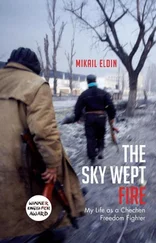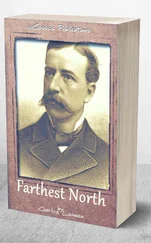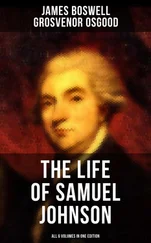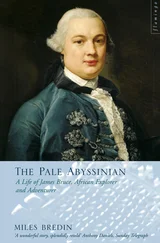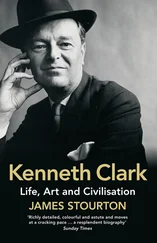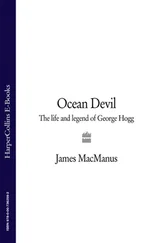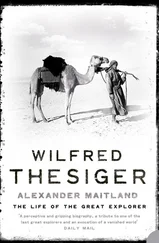Presiding was Samuel Larner, an experienced New Jersey lawyer who had recently been appointed to the Superior Court in Essex County and had already developed a reputation as a no-nonsense judge. Larner gained widespread acclaim in the 1950s when he spearheaded an investigation of government corruption in Jersey City. The inquest triggered more than fifty indictments, culminating in the suicide of one employee and the resignation of several others. Sam Larner knew Ray Brown well. The two men were co-counsel for John William Butenko, an American engineer, and Igor Ivanov, a Soviet national, who just a few years earlier had been convicted of conspiracy to commit espionage.
Judge Larner had been reassigned from Essex to Passaic County, evidently because Passaic was either experiencing a shortage of judges or a backlog of cases. Carter always suspected he had been reassigned to keep Ray Brown under control. Larner intervened often when Brown was pressing witnesses, and their jousting was a running sideshow during the trial.
Each day during the voir dire, for example, the proceedings lasted into the early evening. Then one afternoon Judge Larner abruptly rose at 4 P.M. and declared, “The court is adjourned.” The stunned courtroom silently watched the judge walk toward his chamber. Suddenly, Ray Brown stood up.
“Judge Larner!”
“What is it now, Mr. Brown?”
“Tell me, Judge Larner, why is this night different from all other nights?”
It was the first night of the Jewish holiday of Passover, and the judge needed to get home. He first glared at Brown for his effrontery in questioning a judge’s decision to end the day prematurely. Then he realized Brown’s clever invocation of a line from the Passover Seder. Larner smiled at his former colleague and continued out the door.
Carter, however, found little to smile about. He had never been on trial before. When he did something wrong, he owned up to it, as he had ten years earlier when he pled guilty to robbery and assault. Carter figured he was in trouble during jury selection, a three-week ordeal that saw one potential juror dismissed for being a member of Hitler’s youth movement in Germany and another for believing that blacks who grew up in ghettos were more prone to violence. Despite such efforts, the jury that was selected comprised four white women, nine white men, and one black man—a West Indian. Fourteen jurors in all, two of whom would be selected as alternates at the end of the trial. This was a jury of my peers? Carter thought. Aside from being a different color than all but one of them, I probably had more education than any person sitting on the jury, and even I didn’t understand a damn thing that was going on .
The prosecuting attorney was Vincent Hull, the son of a state legislator, whose precise, low-key manner contrasted sharply with Brown’s showmanship. Hull was young, slim, and conservatively dressed with prematurely gray hair. In his opening statement, he described how the two defendants, after circling the bar in Carter’s 1966 Dodge, parked the car, walked into the Lafayette bar, and without uttering a word “premeditatedly, deliberately, and willfully” shot four people, killing three of them. Hull meticulously described the victims and their wounds and asserted that Detective Emil DeRobbio found an unspent 12-gauge shotgun shell and an unspent .32 S&W long bullet in Carter’s car. Those were the same kinds of bullets, Hull said, used in the bar shooting. When Hull completed his opening, he thanked the jury and sat down.
Judge Larner turned to the defense table. “Mr. Brown,” he said.
Ray Brown rose from the table, his glasses perched on his nose and a legal document in his hand. While the prosecutor had not mentioned race except as it related to the identification of the suspects, Brown argued that Carter stood accused because the police were looking for a Negro on the night in question, and therefore every Negro was suspect. Brown told the jury that Carter didn’t know what happened in the bar and refuted Hull’s assertions point by point, including the alleged discovery of bullets in the Dodge. If the police actually found the bullets on the night of the crime, Brown asked, why wasn’t Carter arrested then instead of four months later?
To convict, the state needed a unanimous vote of guilt from the jurors, so Brown’s strategy was to direct his entire defense to the West Indian juror, hoping to persuade him that the state was victimizing his client. “Any man can be accused,” Brown thundered, “but no man should have his nerves shredded and his guts torn out without a direct charge.”
“Mr. Brown!” Judge Larner exploded. “I don’t want to interrupt you, but I think it is time you limited yourself to the facts to be shown, and let’s get beyond the speeches on philosophy.”
“This is not philosophy, Your Honor. This is a fact.”
The state’s first witness, William Marins, who lost his left eye in the shooting, set the tone for the trial. Carter had hoped that Marins, a balding, stocky man in his forties who was the lone survivor of the tragedy, would convince the jurors that he and Artis were not the gunmen in the same way he had convinced the police at St. Joseph’s Hospital after the shooting. Marins was now an unemployed machinist—and an unsympathetic witness. He told the court that on the night of the crime, he had been shooting pool and drinking beer with another patron, Fred Nauyoks. Also in the bar were Jim Oliver, the bartender, and Hazel Tanis. Suddenly, two colored men entered the place between two-thirty and three o’clock in the morning, shooting everyone inside. One gunman, with a mustache, swung a shotgun. The other, standing directly behind him, had a pistol. Marins said he felt a sharp pain in the left side of his head, noticed smoke curling out of the shotgun barrel, and passed out. When he awoke, “I was bleeding and bleeding and bleeding. I waited for the police to come.”
Throughout the questioning, Marins emphasized that he was in a state of shock after the shooting and was in no condition to identify the gunmen. By the time Brown began his cross-examination, it was clear Marins was not about to exonerate Rubin Carter and John Artis.
“Do you feel like testifying some more, Mr. Marins,” Brown asked, “or would you like a glass of water?”
“No,” Marins snapped.
“You gave a statement to the police about what happened in this place, did you not?”
“Yes, but I was in a state of—”
“I didn’t ask you, sir—” Brown said.
Judge Larner interrupted. “Just answer the particular question, Mr. Marins.”
Brown produced numerous official statements that Marins had given about the shooting, one as late as October 20, 1966. “Now, you repeatedly told these officers, did you not, that [the gunmen] were thin, tall, light-skinned Negroes, didn’t you?”
“I said they were colored,” Marins protested.
Carter, of course, was short, thickly built and black as soot, so Brown homed in on Marins’s previous descriptions, which seemed to have ruled Carter out as a suspect. Shuffling between the witness stand and the defense table, Brown noted that his description matched that of Hazel Tanis, who told police before she died that the gunmen were about six feet tall, slimly built, light-complexioned and had pencil-thin mustaches. Isn’t that the same description you gave? Brown asked Marins.
“No!” Marins insisted. “I told [the police] the man had a dark mustache, or well, it was a mustache. I didn’t look at him that long … I was in a state of shock.”
Brown had one more card to play. “Your Honor, please. At this time I would like to ask that Your Honor unseal depositions given by this man in a civil suit brought by him in January of 1967.”
Читать дальше

